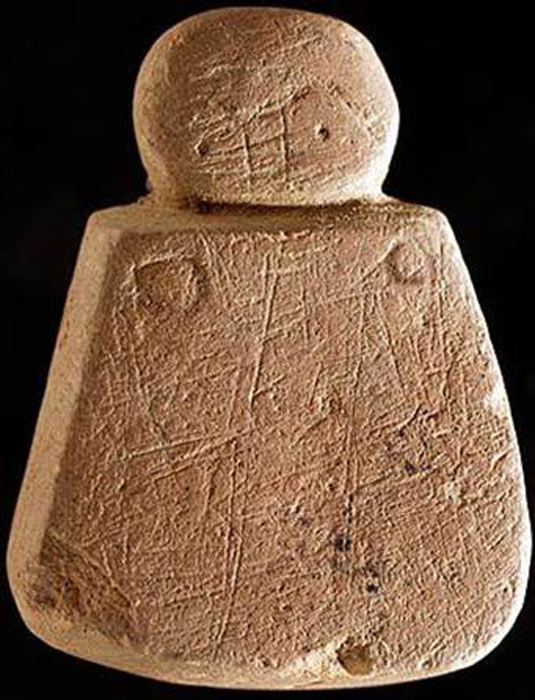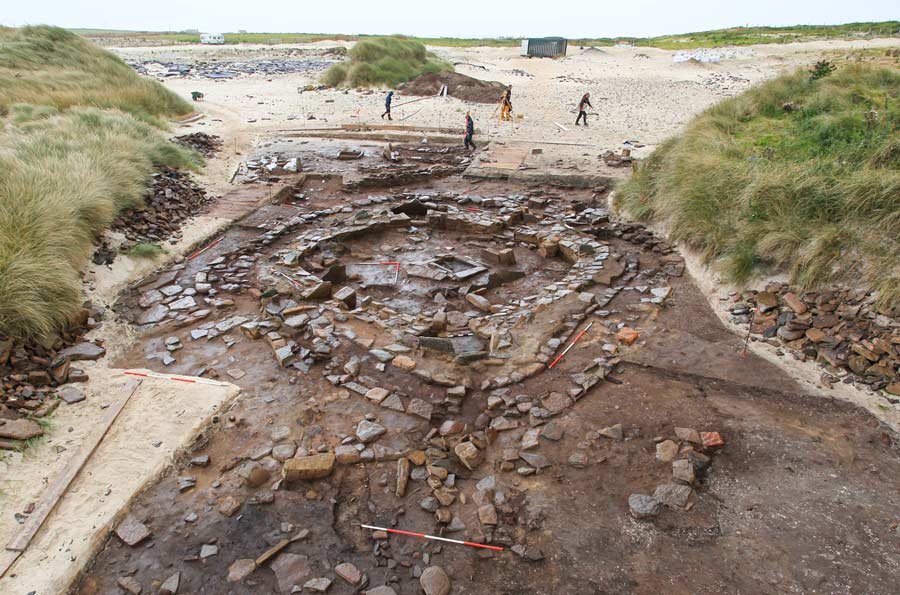Bronze Age Orkney Welcomed Female Migrants, Claims Controversial Paper
A new DNA study is shining light on Bronze Age Orkney. The results show how an influx of mostly women affected family traditions and spiritual customs on the island. However, some scientists are having none of it.
Around 4,500 years ago, Bronze Age farmers on Orkney, the island group off the north coast of Scotland, erected elaborate stone buildings and burial chambers. The Links of Noltland is a 4,000-year-old farming settlement near Grobust Bay on the north coast of Westray in Orkney. A unique lozenge-shaped figurine called the Westray Wife was unearthed here in 2009 and according to Science this artifact represents the “earliest representation of a human face ever found in Scotland.”
- Neolithic Fingerprints In Orkney Offer ‘Unparalleled Glimpse’ of Life
- Bronze Age Steam Room May Have Been Used By Select Orkney Settlers For Rites
Archaeologists at Noltland have unearthed over 35 houses, workshops, a sauna-house and a cemetery with the bodies of 105 people. A new study published in the journal Antiquity looking at ancient DNA gathered from these bodies suggests “an influx of female-dominated migration” sparked a productive period in Orkney during which “new and more complex identities were forged.” The new research also demonstrates that the migrants were welcomed into “established and resilient households,” and that this ancient Orcadian altruism brought about a marriage of old and new ideas.

The Westray Wife, also known as the Orkney Venus, is a small Neolithic figurine discovered at the Links of Noltland site on Westray in the Orkney Islands. (Historic Scotland)
Static Males Welcomed Dynamic Females, Is The Claim
Dr. Graeme Wilson from EASE archaeology (Environment and Archaeology Services Edinburgh) said the team of archaeologists in Orkney found the cemetery was grouped into three households. All three families had long histories of the male lineage which means males more often stayed on ancestral lands while females left home. However, the new DNA shows that Links of Noltland community was composed of local males and incoming females of “continental descent.”
Wilson claimed that the new DNA data suggests Orkney was “taking part in wider networks at a time when it was previously thought to be isolated and undergoing a kind of ‘recession’.” He said local males would also have had to leave the households if the populations became too large, but evidence was found that “household numbers were stable” at this time. According to the study, “female migration between communities was the norm in Orkney and it was no different for the new arrivals.”

Skeletal remains at a cemetery from 1800 BC yielded clues to marriage patterns in the Bronze Age. (EASE Archaeology)
Tracking Continental Beaker Women Migration Patterns
Named after their distinctive decorated bell-shaped clay beakers, Beaker people emerged in the temperate zones of Europe during the Early Bronze Age, about 4,500 years ago. When this culture arrived in Orkney, “new and more complex identities were forged which emphasized ties to the household and the village,” explained Wilson. New agricultural technologies and farming methods changed the shape of agri-rituals and a host of new shared rituals and spiritual activities seems to have led to new found social stability in Orkney.
“This is not an invasion scenario,” professor Thomas Booth, a geneticist at the Francis Crick Institute to Science. This scientist, who was not involved in the study, said the new study shows that large-scale migration patterns were “varied more than previously recognized.” In a nutshell, the new study shows that men on Orkney stayed where they were born, whereas women moved out and others migrated in from the nearby mainland across the Pentland Firth.

View of the Links of Noltland site, where the archaeologists have sampled DNA to reach their conclusions. (D. O'Meara / Antiquity)
But Not Everyone Agrees…
Rather than a “mass migration,” explained Wilson, the new DNA study suggests an influx of women onto the island. Furthermore, the new study might also account for the distinct lack of Bronze Age artifacts discovered on the island. The incoming women, it seems, joined existing communities and abandoned their Beaker backgrounds in favor of the customs of ancient Orkney.
- What Prompted the Shellfish Extravaganza at an Iron Age Feast Site, Orkney?
- Stone Age Orkney Islanders Dismembered Deceased Relatives and Defleshed their Bones
While all this seems to make sense, not everyone is convinced, such as archaeologist Alison Sheridan, an emerita curator at National Museums Scotland. Sheridan told Science that she “sees no sign of a major influx of women into the Orkney Islands during the Bronze Age.” Furthermore, there is no actual evidence for large numbers of people migrating to Orkney at any time between 2500 BC and 1500 BC, says the sceptic.
Top image: Eroding sand dunes revealed an archaeological site at the Links of Noltland on Westray, evidence of a settlement on Bronze Age Orkney. Source: EASE Archaeology
By Ashley Cowie

















